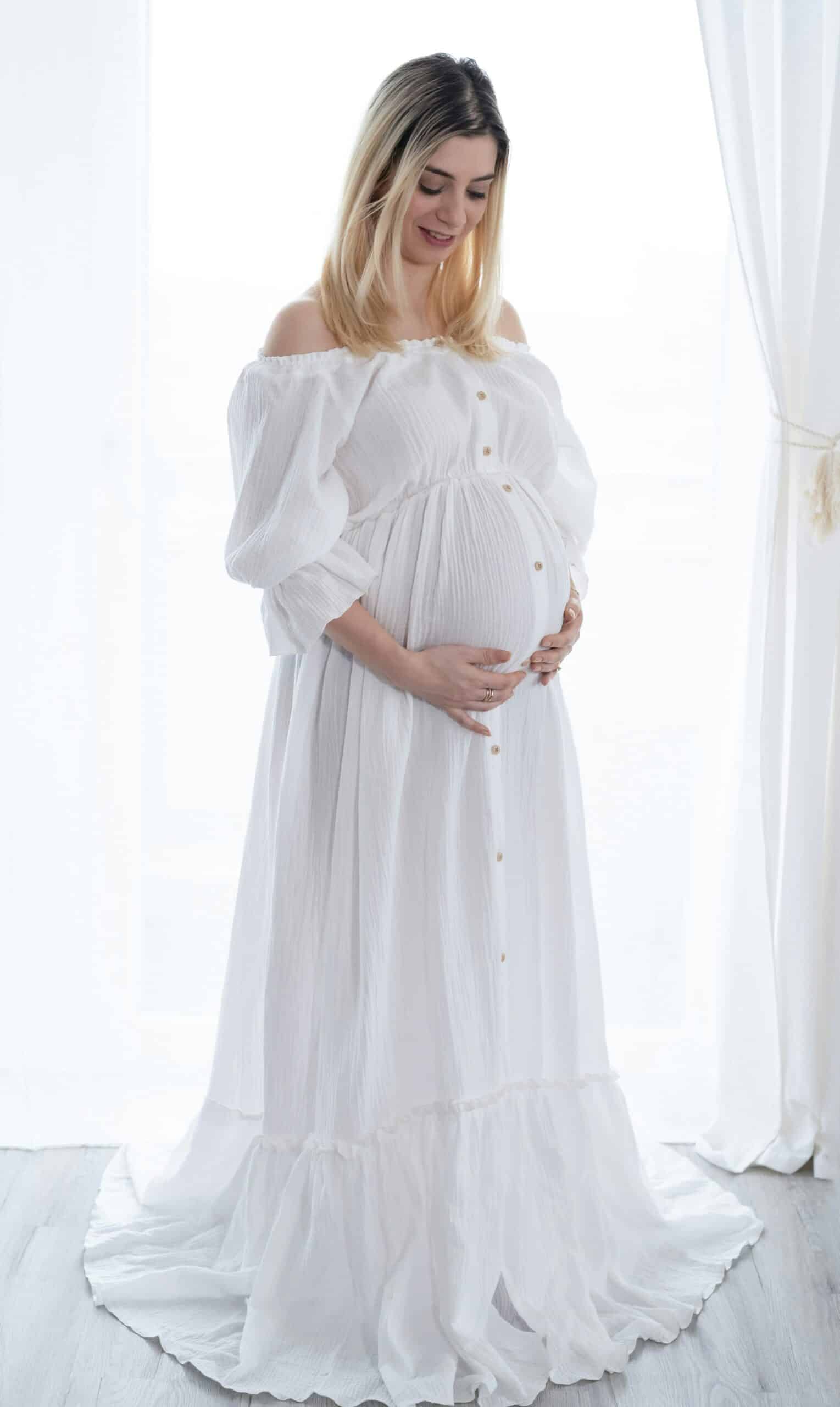Endometriosis impacts approximately one in ten women of reproductive age, directly influencing conception by affecting ovarian function, fallopian tube patency, and uterine receptivity. Understanding this condition can transform uncertainty into proactive steps toward parenthood. This article explores endometriosis and its implications for fertility, delves into its effects on egg quality and ovarian reserve, outlines diagnostic approaches, examines surgical and medical treatment options, details assisted reproductive technologies, and addresses strategies for emotional well-being. By following expert guidance, you can approach each stage of your fertility journey with clarity and confidence.
Understanding Endometriosis and Its Impact on Fertility

Endometriosis is a chronic condition where tissue similar to the uterine lining grows outside the uterus, leading to inflammation, scarring, and pain that can hinder fertility by obstructing reproductive pathways and altering hormonal balance. This inflammatory process can decrease the likelihood of natural conception and live birth. For instance, implants on the peritoneum can distort pelvic anatomy, making egg release and embryo implantation more challenging.
Exploring the Types and Stages of Endometriosis
Below is a comparison of different forms and severity levels of endometriosis to illustrate the variations in how the disease presents and its potential impact on fertility.
Peritoneal implants can lead to adhesions that bind organs together, while ovarian endometriomas can directly affect follicle development. Recognizing these differences helps in making informed treatment decisions and understanding the mechanisms of infertility.
How Endometriosis Contributes to Infertility
Endometriosis contributes to infertility through three main mechanisms:
- Anatomical distortion – Adhesions can bind the ovaries and fallopian tubes, hindering egg capture.
- Inflammatory environment – Elevated cytokines in the peritoneal fluid can affect sperm function and embryo implantation.
- Hormonal disruption – Local estrogen production by lesions can alter ovulatory cycles and endometrial receptivity.
By understanding how immune mediators and adhesions interact, we can better grasp why natural conception rates may decrease and which reproductive organs are most affected.
Which Reproductive Organs Are Affected by Endometriosis?
Endometriosis can impact key anatomical structures involved in conception, as illustrated below:
These disruptions in organ function help explain why many patients experience subfertility, setting the stage for understanding its prevalence and risk factors.
The Prevalence of Endometriosis-Related Infertility
Endometriosis-related infertility affects an estimated 30–50 percent of women diagnosed with the condition, impacting roughly 190 million women globally who face conception challenges. The severity of the disease often correlates with lower pregnancy rates, particularly in Stages III–IV. Understanding these statistics highlights the importance of early evaluation and specialized care at centers equipped to manage complex fertility cases.
Endometriosis and Infertility: A Closer Look
Endometriosis-related infertility affects a significant portion of women with the condition, with estimates suggesting that 30–50 percent of women with endometriosis experience infertility. This translates to a substantial number of women worldwide facing challenges in conception.
How Endometriosis Affects Ovulation, Egg Quality, and Ovarian Reserve

Endometriosis can impair ovarian function by altering the follicular environment, reducing egg survival, and depleting the ovarian reserve through cyst formation and chronic inflammation. This process can shorten the reproductive lifespan and diminish the response to ovarian stimulation.
The Impact of Ovarian Endometriomas on Egg Quantity and Quality
Ovarian endometriomas can compromise ovarian follicles by exerting pressure and releasing inflammatory substances into the ovarian tissue.
Key consequences include:
- Follicular loss due to localized oxidative stress.
- Reduced oocyte maturation resulting from disrupted microcirculation.
- Diminished fertilization potential due to altered granulosa cell function.
Ovarian Endometriomas and Their Effect on Ovarian Function
Ovarian endometriomas can negatively affect egg quality and quantity. They compromise follicles by exerting pressure and releasing inflammatory mediators into the ovarian stroma, leading to follicular loss and reduced oocyte maturation. Surgical removal of endometriomas is often considered to preserve egg quality and quantity before fertility treatments.
Somigliana, E., et al., Effect of endometriomas on ovarian reserve: a systematic review and meta-analysis. Human Reproduction Update, (2010)
This study supports the article’s discussion on the detrimental effects of ovarian endometriomas on fertility and the rationale for surgical intervention.
Endometriosis and Its Influence on Hormonal Balance and Ovulation
Endometriosis lesions can produce estrogen locally, creating a feedback loop that suppresses the normal luteinizing hormone (LH) surges. This imbalance can lead to:
- Anovulatory cycles when follicles fail to rupture.
- Shortened luteal phases that hinder embryo implantation.
- Elevated prostaglandins that disrupt folliculogenesis.
Understanding these hormonal disruptions allows for targeted therapies to help restore ovulation and improve conception rates.
Can Endometriosis Lead to a Reduced Ovarian Reserve?
Yes, endometriosis can reduce ovarian reserve by damaging primordial follicles and promoting fibrosis. Anti-Müllerian hormone (AMH) levels may decline in more advanced stages of the disease, indicating a lower remaining egg quantity. Early detection and intervention are crucial for preserving ovarian reserve and optimizing the timing of conception efforts.
Diagnosing Endometriosis in Women Facing Fertility Challenges

Accurate diagnosis of endometriosis is fundamental for effective fertility management, as it confirms the extent and severity of lesions and their impact on reproductive anatomy.
The Role of Diagnostic Laparoscopy in Detecting Endometriosis
Diagnostic laparoscopy is considered the gold standard for visualizing and biopsying endometriotic lesions. It enables:
- Direct identification of implants on pelvic structures.
- Simultaneous removal of lesions to enhance fertility.
- Adhesiolysis to restore normal anatomical relationships.
The precision of laparoscopy guides personalized treatment plans and can be seamlessly integrated with noninvasive imaging assessments.
Utilizing Imaging Techniques Like Ultrasound and MRI for Diagnosis
Noninvasive imaging techniques can identify deep and ovarian lesions using high-resolution modalities:
- Transvaginal ultrasound can detect ovarian endometriomas and pelvic adhesions.
- Pelvic MRI offers superior soft-tissue contrast for delineating deep infiltrating disease.
These scans aid in preoperative mapping, potentially reducing surgical time and improving the accuracy of lesion removal.
Recommended Fertility Tests for Couples with Endometriosis
A comprehensive fertility evaluation is beneficial for both women and their partners, including:
- Hormone profiling – Assessing AMH, FSH, LH, and estradiol levels.
- Semen analysis – Evaluating sperm concentration, motility, and morphology.
- Hysterosalpingography – Checking for tubal patency.
Combining these tests helps clarify the causes of infertility and guides decisions regarding surgical intervention, medical therapy, or assisted reproduction.
Surgical Treatments to Enhance Fertility Outcomes in Endometriosis Patients

Surgical management aims to remove lesions and restore normal pelvic anatomy, thereby improving the chances of natural conception or response to fertility treatments.
How Laparoscopic Excision Surgery Aids in Restoring Fertility
Laparoscopic excision surgery involves removing visible endometriotic implants and adhesions, which can improve fertility by:
- Clearing blockages in the fallopian tubes.
- Reducing inflammatory cytokines within the peritoneal cavity.
- Normalizing ovarian anatomy to facilitate better follicle release.
Evidence suggests that excision surgery can increase spontaneous pregnancy rates by up to 50–60 percent in women with Stage I–II disease.
Surgical Treatment Outcomes for Endometriosis: A Comparative View
Laparoscopic excision surgery is a key treatment for endometriosis, with evidence suggesting that it can increase spontaneous pregnancy rates. Studies show that excision surgery increases spontaneous pregnancy rates up to 50–60 percent in women with Stage I–II disease. In comparison to ablation, excision promotes higher conception rates.
Comparing Excision vs. Ablation Surgery for Fertility Success Rates
A comparison of laparoscopic techniques reveals distinct outcomes:
Recovery and Conception Timeline After Surgery
- 2–4 weeks – Resumption of normal activities and regulation of hormonal cycles.
- 3–6 months – Optimal period for spontaneous conception following adhesiolysis.
- 6–12 months – A timeframe to reassess options, including assisted reproduction, if conception has not occurred.
This structured timeline helps patients plan their next steps in collaboration with their fertility team.
Medical and Hormonal Therapies to Support Fertility in Endometriosis
Medical management aims to control symptoms and optimize reproductive function without delaying conception efforts.
How Hormone Therapy Influences Fertility and Endometriosis Symptoms
Hormonal therapies create a state of reduced estrogen, which can shrink lesions and alleviate pain by:
- Gonadotropin-releasing hormone (GnRH) agonists that decrease estrogen production.
- Progestins that counteract estrogen-driven lesion growth.
- Combined oral contraceptives that help stabilize menstrual cycles.
While effective for pain management, prolonged suppression might delay conception, so the timing and duration of these therapies are carefully tailored to fertility goals.
Pain Management Strategies for Women Trying to Conceive
Effective pain control can improve quality of life and support natural conception through:
- NSAIDs to reduce pain associated with prostaglandins.
- Physical therapy to promote pelvic floor relaxation.
- Acupuncture to help modulate pain pathways and enhance blood flow.
Combining these strategies helps maintain comfort without interfering with ovulation, preparing patients for successful conception attempts.
Can Medical Management Alone Improve Pregnancy Rates?
Medical therapy alone typically does not significantly increase pregnancy rates, but it can:
- Help manage lesion progression between surgical interventions and conception attempts.
- Contribute to a more favorable endometrial environment for implantation.
Therefore, integrating medical management with surgical or assisted reproductive approaches often optimizes overall fertility outcomes.
Assisted Reproductive Technologies (ART) for Women with Endometriosis

ART can help overcome anatomical and inflammatory barriers by directly facilitating fertilization and embryo transfer.
IVF Success Rates for Women with Endometriosis
In vitro fertilization (IVF) success rates for women with endometriosis typically range from approximately 30–40 percent per cycle, influenced by factors such as age and disease severity. Customized stimulation protocols and specialized embryo selection techniques can help achieve outcomes comparable to those for other infertility causes.
How IUI Assists with Endometriosis-Related Infertility
Intrauterine insemination (IUI) can enhance natural conception by:
- Sperm preparation – Isolating concentrated, motile sperm.
- Timed insemination – Directly placing sperm into the uterine cavity during ovulation.
- Hormonal support – Mild stimulation may improve follicle development.
IUI tends to be most successful in cases of mild to moderate endometriosis and serves as a less invasive initial ART option.
When Egg Freezing is Recommended for Endometriosis Patients
Egg freezing is often recommended when:
- Early-stage disease poses a risk of ovarian reserve depletion over time.
- Planned surgical removal of endometriomas might reduce follicle count.
- Pregnancy is anticipated to be delayed due to treatment plans or personal circumstances.
Preserving oocytes ensures future reproductive possibilities and empowers patients to have greater control over their family planning timeline.
Coping with the Emotional and Psychological Impact of Endometriosis-Related Infertility

Beyond medical care, emotional support is vital for fostering resilience and enhancing overall well-being throughout the fertility journey.
Common Emotional Challenges During the Fertility Journey
Patients often experience:
- Anxiety and uncertainty regarding conception prospects.
- Feelings of grief and loss after unsuccessful treatment cycles.
- Stress-induced flare-ups that can worsen endometriosis symptoms.
Recognizing these challenges allows for the implementation of targeted coping strategies and mental health support.
Support Resources Available for Women with Endometriosis
Women can benefit from a variety of supportive services:
- Specialized support groups that connect individuals with shared experiences.
- Counseling with therapists experienced in reproductive psychology.
- Educational workshops focused on stress management and self-advocacy.
Utilizing these resources can strengthen emotional resilience and complement clinical treatments.
How Family and Partners Can Support Fertility Patients with Endometriosis
Family and partners play a crucial role by:
- Validating emotions and offering a non-judgmental listening ear.
- Participating in medical appointments to stay informed and involved.
- Providing practical assistance with daily tasks during recovery periods.
This collaborative approach helps reduce feelings of isolation and fosters a supportive environment for conception efforts.
Connect with the EndoExcellence Center today to explore personalized treatment plans that combine surgical expertise, advanced diagnostics, and compassionate support throughout your fertility journey. Our multidisciplinary team is dedicated to empowering you with evidence-based care and emotional guidance every step of the way.

